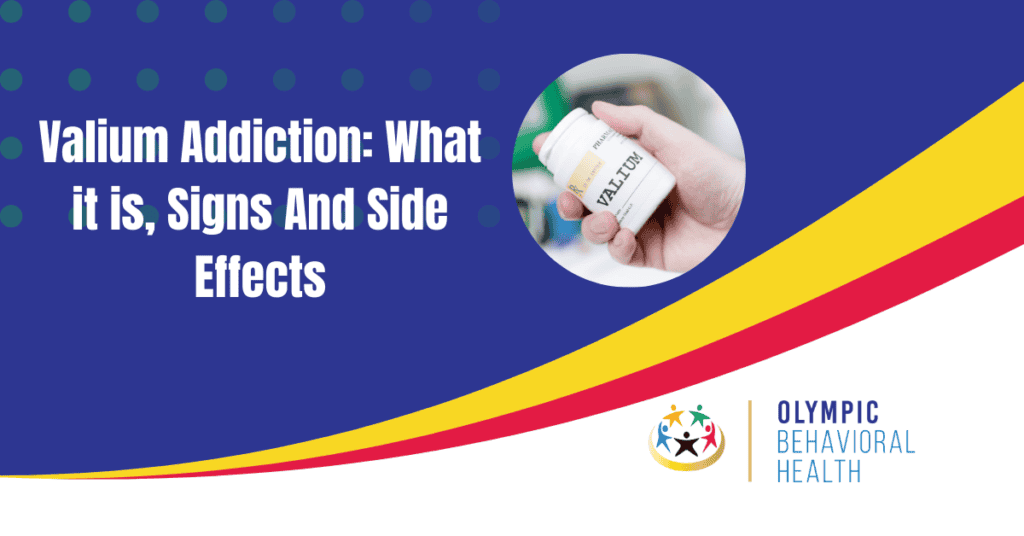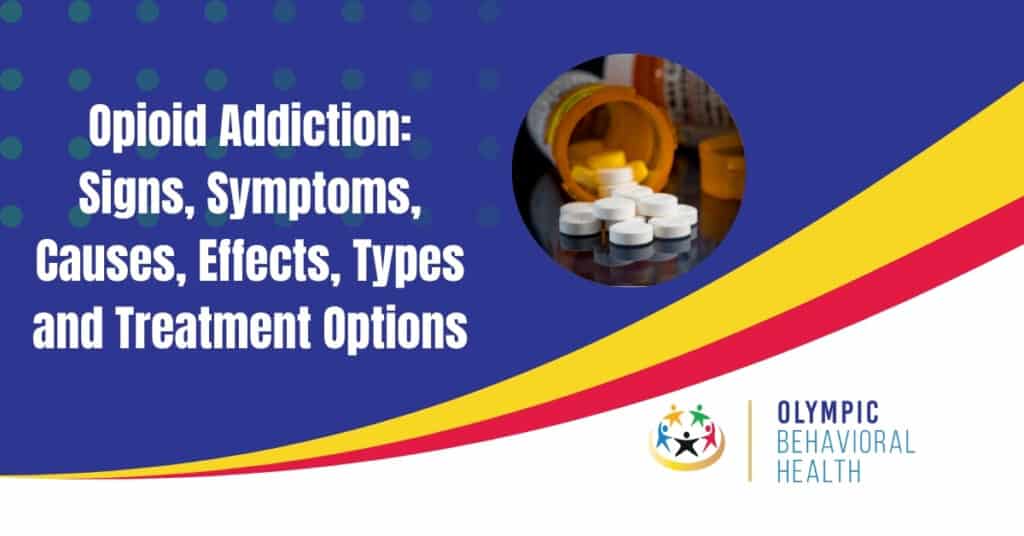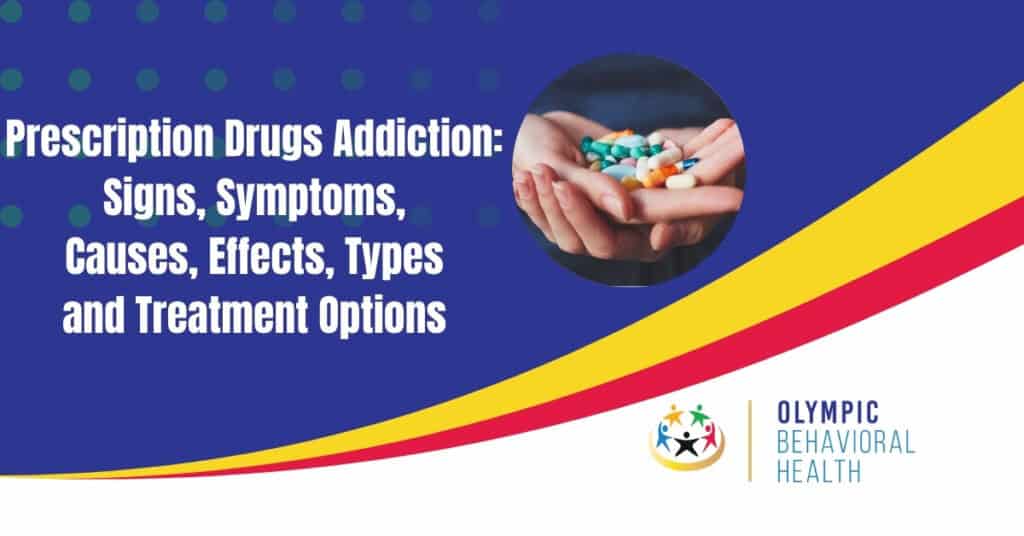Valium addiction, also known as diazepam addiction, is a serious and growing concern. Valium is a prescription medication that belongs to the benzodiazepine class of drugs, commonly used to treat anxiety, muscle spasms, and seizures. However, abuse and overuse of Valium can lead to addiction, which can have detrimental effects on a person’s physical and mental health. Recognizing the signs and side effects of Valium addiction is crucial in order to seek timely intervention and support. This article will explore what Valium addiction entails, the telltale signs to look out for, and the potential side effects associated with this addiction.
What is Valium?
Valium, also known as diazepam, is a medication in the class of benzodiazepines. It treats anxiety disorders, muscle spasms, and seizures by enhancing the effects of GABA in the brain. Valium is widely prescribed for its effectiveness, but long-term use can lead to dependence and addiction. Follow the prescribed dosage and duration to minimize these risks.
Valium, also referred to as diazepam, is a benzodiazepine medication used to treat anxiety disorders, muscle spasms, and seizures by enhancing the effects of gamma-aminobutyric acid (GABA) in the brain. Valium is highly effective and commonly prescribed; however, prolonged use can result in dependence and addiction. It is crucial to adhere to the prescribed dosage and duration to reduce the likelihood of these risks.
Valium is available in tablet form, with strengths ranging from 2mg to 10mg. The dosage depends on the individual’s condition and symptoms. Take the medication orally, with or without food, as directed by the healthcare provider.
Valium comes in tablet form, with a variety of strengths ranging from 2mg to 10mg. The appropriate dosage will depend on the specific condition and symptoms of the individual. It is important to follow the healthcare provider’s instructions and take the medication orally, with or without food.
Common side effects of Valium include drowsiness, dizziness, and confusion. It can impair coordination and judgment, so avoid activities requiring mental alertness while taking Valium. Do not mix Valium with alcohol as it can increase sedative effects and cause dangerous respiratory depression. Inform your healthcare provider about other medications or supplements to prevent adverse effects.
Typical adverse effects of Valium include drowsiness, dizziness, and confusion. It can negatively affect coordination and judgment, therefore it is advisable to abstain from activities that necessitate mental alertness while using Valium. Combining Valium with alcohol can intensify the sedative properties and lead to hazardous respiratory depression. Ensure you inform your healthcare provider about any other medications or supplements to avoid potential complications.
Valium may provide relief from anxiety symptoms, promote relaxation, and improve sleep. However, it is crucial to follow the prescribed usage and consult a healthcare professional to avoid potential risks. Valium treats anxiety disorders, muscle spasms, and seizures by enhancing the effects of GABA, reducing brain activity, and promoting relaxation. Use Valium appropriately to experience its benefits while minimizing dependence and addiction.
Valium can alleviate symptoms of anxiety, induce relaxation, and enhance sleep quality. Nevertheless, adhering to prescribed usage and seeking guidance from a healthcare professional is of utmost importance to mitigate potential risks. Valium effectively addresses anxiety disorders, muscle spasms, and seizures by augmenting the impact of GABA, diminishing brain activity, and facilitating relaxation. Ensure appropriate use of Valium to optimize its advantages and mitigate the risk of dependence and addiction.
Understanding Valium Addiction
Understanding Valium Addiction
Valium, or diazepam, is a prescription drug in the benzodiazepine class. While Valium can treat anxiety, muscle spasms, and seizures, it has the potential for addiction.
1. High risk for addiction: Valium is highly addictive, causing calmness and relaxation. Continued use leads to physical and psychological dependence, requiring professional help to quit.
2. Withdrawal symptoms: Suddenly stopping Valium can cause anxiety, irritability, insomnia, muscle cramps, and seizures. Seek medical assistance to safely manage withdrawal.
3. Increased tolerance: Prolonged use may lead to tolerance, needing higher doses for desired effects. This increases the risk of overdose and other health issues.
4. Risk of overdose: High doses of Valium can be life-threatening, causing extreme drowsiness, confusion, slowed breathing, and loss of consciousness. If overdose is suspected, seek immediate medical attention.
5. Co-occurring mental health disorders: Valium addiction can worsen underlying mental health issues. Understanding this connection is important.
To address Valium addiction, try the following steps:
– Seek professional help: Reach out to healthcare professionals or addiction specialists for guidance and support.
– Gradual tapering: Quitting Valium abruptly is dangerous. Healthcare professionals can create a tapering plan to reduce dosage gradually and manage withdrawal symptoms.
– Explore alternative treatments: Cognitive-behavioral therapy and other therapies can address the root causes of anxiety and provide healthier coping mechanisms.
– Support system: Surround yourself with supportive friends, family, or support groups throughout the recovery process.
Understanding Valium addiction is crucial for informed decision-making. If you or someone you know is struggling with Valium addiction, seek help as soon as possible to begin the journey towards recovery.
What is Valium Addiction?
Valium addiction occurs when individuals misuse or become dependent on the prescription drug Valium. Valium, or Diazepam, is a benzodiazepine used to treat anxiety disorders, muscle spasms, and seizures. However, some people may misuse Valium for recreational purposes, leading to addiction.
Valium addiction can develop even when taken as prescribed. Dependency occurs when the body becomes accustomed to the drug and requires higher doses for the same effect. This leads to escalating drug use and increased tolerance.
Signs and symptoms of Valium addiction include physical effects like drowsiness, dizziness, and impaired coordination. Behavioral symptoms include seeking multiple doctors for prescriptions or engaging in risky behaviors to obtain the drug. Psychologically, individuals may experience mood swings, irritability, and anxiety without access to the drug.
Stopping or reducing Valium use can result in withdrawal symptoms such as restlessness, insomnia, muscle spasms, and seizures. Medical professionals should manage withdrawal to ensure safety and minimize discomfort.
Treatment for Valium addiction typically involves therapy and medication-assisted treatment. Therapy helps address the underlying causes and develop coping mechanisms to prevent relapse. Medications can manage withdrawal symptoms and cravings.
Prevention of Valium addiction starts with safe usage and responsible prescribing. Patients should follow their doctor’s instructions closely and healthcare providers should carefully prescribe Valium, considering alternatives and monitoring patients to prevent dependency.
How Does Valium Addiction Develop?
Valium addiction develops through a combination of physiological, psychological, and behavioral factors. Understanding the process of addiction development is crucial for preventing and addressing Valium addiction.
1. Prescribed use: Valium, also known as diazepam, is commonly prescribed for conditions such as anxiety, muscle spasms, and seizures. When used as directed by a healthcare professional, Valium is both effective and safe. However, individuals who are prescribed Valium should be aware of its addictive potential.
2. Abuse and tolerance: Prolonged use of Valium can lead to tolerance, which means that higher doses are needed to achieve the same effects. This can increase the likelihood of misuse and potential addiction.
3. Self-medication: Some individuals turn to Valium as a means of coping with stress or emotional issues. This reliance on the drug for emotional regulation can contribute to the development of addiction.
4. Psychological dependence: Over time, individuals may develop a psychological dependence on Valium due to its calming effects. They may fear experiencing withdrawal symptoms and believe that they cannot function without the drug.
5. Continued use despite consequences: Despite experiencing negative consequences in various aspects of their lives, individuals may continue to use Valium in order to avoid withdrawal symptoms or to cope with emotional distress caused by addiction.
6. Physical dependence: Long-term Valium use can result in physical dependence, where the body becomes reliant on the drug in order to function normally. Abruptly stopping Valium can lead to the onset of withdrawal symptoms, such as anxiety, insomnia, muscle pain, and seizures.
7. Cravings and relapse: Even after successful treatment, individuals in recovery from Valium addiction may experience cravings triggered by environmental cues, emotions, or social situations. This increases the risk of relapse.
It is important to understand that not everyone who uses Valium will develop an addiction. Factors such as genetics, co-occurring mental health disorders, and environment also play a role in addiction development. Recognizing the signs of Valium addiction and seeking appropriate treatment are vital steps in addressing this issue and promoting recovery.
Signs and Symptoms of Valium Addiction
Are you concerned about valium addiction? In this section, we’ll dive into the signs and symptoms that can indicate someone is struggling with valium addiction. From physical manifestations to behavioral cues and psychological effects, we’ll explore the different aspects that can suggest a person is dependent on valium. By understanding these indicators, you’ll be able to recognize potential addiction issues and seek appropriate support or treatment. Stay informed and aware, as we uncover the telltale signs of valium addiction.
Physical Symptoms
Physical symptoms are crucial to consider when it comes to valium addiction. Valium addiction can lead to a variety of physical symptoms, which act as warning signs. The following are some examples of physical symptoms associated with valium addiction:
- Slurred speech: Valium addiction can cause slurred speech due to its impact on the central nervous system.
- Impaired motor skills: Coordination, balance, and fine motor movements can be impaired by valium addiction.
- Drowsiness: Excessive drowsiness is a physical symptom that can be observed in cases of valium addiction.
- Muscle weakness: Valium can result in muscle weakness and stiffness.
- Tremors: Valium addiction may lead to uncontrollable shaking, primarily affecting the hands, arms, or legs.
- Headaches: Frequent headaches or migraines can be attributed to valium addiction.
- Slow heart rate: Valium causes the heart rate to decrease, resulting in fatigue and dizziness.
- Reduced reflexes: Valium affects the central nervous system, reducing reflexes and making quick reactions more challenging.
- Gastrointestinal issues: Valium addiction can contribute to gastrointestinal problems such as constipation or upset stomach.
- Respiratory problems: Severe valium addiction can cause respiratory problems, including shallow breathing or difficulty breathing.
The severity of these physical symptoms can vary depending on the individual’s level of valium addiction. It is important for anyone experiencing these symptoms to seek professional help and support.
Behavioral Symptoms
Behavioral symptoms are common indicators of Valium addiction. These symptoms can vary in severity and may be noticeable in an individual’s actions, choices, or interactions with others. It is important to be aware of these behavioral symptoms as they can help identify a potential addiction and prompt early intervention.
– Changes in social interactions: Addicted individuals may withdraw from social activities or isolate themselves. They may prefer to spend most of their time alone and have difficulties maintaining relationships.
– Secretive behavior: Addicted individuals may try to hide their substance abuse. They may lie about their drug use or make excuses to engage in drug-seeking activities.
– Erratic mood swings: Valium addiction can lead to frequent and unpredictable mood changes. Addicted individuals may experience bursts of euphoria followed by periods of irritability, depression, or anxiety.
– Neglecting responsibilities: Addicted individuals may neglect their personal and professional responsibilities. They may have difficulties fulfilling obligations at work, school, or home due to their drug use.
– Financial difficulties: Valium addiction can be costly. Addicted individuals may spend excessive amounts of money on obtaining the drug, leading to financial strain. They may neglect paying bills or prioritize drug expenses over essential needs.
– Loss of interest in hobbies and activities: People struggling with Valium addiction may lose interest in activities they once enjoyed.
– Engaging in risky behaviors: Addicted individuals may engage in reckless or dangerous activities to obtain Valium or while under its influence.
– Deterioration of physical appearance: Valium addiction can negatively impact physical health. Addicted individuals may neglect personal hygiene, leading to a decline in their physical appearance.
Recognizing these behavioral symptoms is crucial for identifying Valium addiction. If you or someone you know exhibits these signs, it is important to seek professional help and support for addiction treatment.
Psychological Symptoms
Psychological symptoms are indications of Valium addiction and can profoundly affect mental well-being. It is crucial to identify these symptoms in order to effectively address Valium addiction.
One of the psychological symptoms associated with Valium addiction is increased anxiety. While Valium is used to treat anxiety disorders, prolonged use can actually worsen or heighten anxiety symptoms.
Another psychological symptom of Valium abuse is mood swings, characterized by sudden and extreme shifts in mood such as irritability, anger, and depression. These mood swings have a negative impact on relationships and overall quality of life.
Impaired judgment is also a psychological symptom of Valium addiction. Valium impairs cognitive function and decision-making, which can result in impulsive or reckless choices, leading to risky behaviors or dangerous situations.
Memory problems are commonly experienced by individuals addicted to Valium. Valium affects memory and cognition, making it difficult to remember important information or events. Consequently, this can negatively affect job performance or strain relationships.
Emotional detachment is another psychological symptom of Valium addiction. It causes a sense of emotional numbness and a lack of interest or pleasure in activities that were once enjoyed. This emotional detachment often leads to social isolation and feelings of loneliness.
Increased aggression is also observed in individuals who abuse Valium. Valium abuse triggers aggressive behavior and hostility, leading to conflicts and potential legal issues.
Poor concentration is another psychological symptom of Valium addiction. Valium affects focus and concentration, making it challenging to perform daily tasks or engage in conversations and activities.
During Valium withdrawal, psychological symptoms intensify, including intense cravings, restlessness, and agitation. Professional help is necessary to address these psychological symptoms. Therapy and counseling provide individuals with the tools to cope with emotional challenges and develop healthier coping mechanisms. In certain cases, medication-assisted treatment may be used to manage withdrawal symptoms and reduce cravings.
It is important to note that addressing psychological symptoms is just one aspect of treating Valium addiction. Comprehensive treatment should also target physical symptoms, behavioral patterns, and provide support for detoxification and relapse prevention. With the right treatment and support system, recovery from Valium addiction is possible.
Side Effects of Valium
Discover the untold realities of Valium as we delve into the intriguing world of its side effects. Unveiling both the common and serious implications, we will explore the impact this medication can have on your mind and body. Brace yourself as we uncover the hidden truths behind Valium’s potential repercussions, shedding light on the lesser-known consequences that may surprise you. Get ready to dive deep into the realm of Valium’s side effects, and prepare to be informed like never before.
Common Side Effects
Common side effects of Valium may occur in individuals who take this medication. It is important to be aware of these side effects to ensure the safety and well-being of the user. Here are some common side effects associated with Valium:
- Drowsiness: Valium can cause drowsiness in individuals taking the medication. This may affect their ability to concentrate or operate machinery.
- Dizziness: Some individuals may experience dizziness after taking Valium. It is important to avoid activities that require alertness until the dizziness subsides.
- Weakness: Feeling weak or experiencing a lack of energy can be a common side effect of Valium.
- Headache: Headaches may occur in some individuals as a result of taking Valium. If the headache persists or worsens, it is important to consult a healthcare professional.
- Dry mouth: Valium can cause a dry mouth sensation. Staying hydrated and using sugar-free gum or lozenges can help alleviate this side effect.
Pro-tip: If you experience any of these common side effects while taking Valium, inform your healthcare provider. They can provide guidance and determine if any adjustments to your medication regimen are necessary. Follow their instructions and consult them before making any changes to your medication.
Valium’s serious side effects can make you question if relaxation is worth the risk, but hey, at least your worries will be numbed!
Serious Side Effects
The serious side effects of Valium can significantly impact an individual’s physical and mental health. It is important to be aware of these serious side effects when taking this medication. Here are some of the serious side effects that can occur with Valium:
1. Respiratory depression: Valium can slow down breathing, especially in high doses or when combined with alcohol. This can potentially lead to a decrease in oxygen supply to the brain and vital organs, which may result in unconsciousness or even death.
2. Severe drowsiness: Valium is a sedative and can cause extreme drowsiness, making it dangerous to operate machinery or drive. This effect becomes even more pronounced when Valium is combined with alcohol or other central nervous system depressants.
3. Memory problems: Valium can impair memory and cognitive function, particularly at higher doses. This can make it difficult to learn new information and may lead to confusion or disorientation.
4. Mental health effects: Valium use can exacerbate underlying mental health conditions or trigger new ones. It increases the risk of depression, anxiety, agitation, and even suicidal thoughts or behaviors.
5. Physical dependence and withdrawal: Prolonged use of Valium can result in physical dependence, meaning that stopping the medication suddenly can cause withdrawal symptoms. These symptoms may include rebound anxiety, insomnia, muscle stiffness, and seizures.
If any of these serious side effects occur while taking Valium, it is crucial to seek immediate medical attention. It is important to follow the prescribed dosage and duration of use in order to minimize the risk of experiencing these adverse effects. Valium should only be used under the guidance of a healthcare professional, and any concerns or questions should be addressed with them.
6. If Valium addiction were a game of hide and seek, treatment options would be the ultimate seekers.
Treatment Options for Valium Addiction
Looking for effective ways to combat valium addiction? This section dives into the treatment options available, offering hope and support. From therapy and counseling to medication-assisted treatment, we’ll explore the diverse approaches to overcoming valium dependency. Discover the power of professional guidance and discover the strategies that contribute to successful recovery. Let’s uncover the paths to a healthier, drug-free life.
Therapy and Counseling
Therapy and counseling play a critical role in the treatment of Valium addiction. Addiction to this substance is not solely a physical dependency; it also involves psychological and behavioral issues. These types of treatments provide individuals with the opportunity to address underlying problems and develop strategies to overcome their addiction.
One effective approach is individual therapy, where clients work closely with a therapist or counselor. Through these sessions, individuals can explore the reasons behind their substance abuse, identify triggers, and develop coping mechanisms. Therapy offers valuable insight into addictive behaviors and healthier ways to manage stress and emotional challenges.
Another beneficial option is group therapy, which brings together individuals who are struggling with Valium addiction. This creates a sense of community and support among those facing similar obstacles. Group therapy allows participants to share their experiences, gain different perspectives, and learn from their peers. It also helps in developing interpersonal skills and strategies to prevent relapse.
A widely used therapeutic approach in addiction treatment is Cognitive Behavioral Therapy (CBT). CBT focuses on identifying and changing negative patterns of thinking and behavior related to substance abuse. It aids in developing healthier coping mechanisms, problem-solving skills, and self-esteem. By challenging distorted thinking and addressing maladaptive behaviors, CBT empowers individuals to make positive changes.
In addition, family therapy is crucial as addiction affects not only the individual but also the dynamics within the family. This type of therapy involves family members in the treatment process, improving communication and rebuilding trust. It also educates loved ones about addiction. Family therapy provides a supportive environment for addressing the impact of addiction and working towards recovery together.
To enhance the overall well-being and reduce stress, holistic therapies such as art therapy, music therapy, mindfulness-based techniques, and yoga can be included alongside traditional therapy approaches. These therapies promote self-awareness, relaxation, and a greater sense of well-being.
When seeking therapy or counseling for Valium addiction, it is important to choose professionals who specialize in addiction treatment. Look for individuals with experience and expertise in substance abuse and evidence-based therapies. Active and honest engagement in therapy and counseling is essential for achieving successful long-term recovery.
Medication-Assisted Treatment: Because sometimes you need more than just a Valium to kick the Valium.
Medication-Assisted Treatment
Medication-Assisted Treatment (MAT) is a valuable therapy for Valium addiction. It combines medications with counseling and behavioral therapies for a comprehensive approach to recovery.
MAT reduces withdrawal symptoms and cravings associated with Valium addiction. Medications, such as benzodiazepine receptor agonists, stabilize brain chemistry and alleviate withdrawal symptoms by binding to the same receptors as Valium, reducing cravings and the risk of relapse.
Counseling and behavioral therapies are essential components of MAT. They help address underlying causes of addiction, develop coping skills, and prevent relapses. Through therapy, individuals can identify triggers and develop healthier ways of managing stress and anxiety.
MAT is tailored to meet individual needs. The dosage and duration of medication may vary depending on addiction severity and individual response. Working with healthcare professionals is important to determine appropriate medication and treatment plans.
Studies show that MAT significantly improves treatment outcomes for Valium addiction. It increases retention in treatment programs, reduces opioid use, and decreases the risk of overdose. MAT is a safe and effective treatment option, enhancing the overall quality of life for individuals in recovery.
MAT should be used as part of a comprehensive treatment plan, along with counseling and therapy to address psychological and behavioral aspects of addiction. The goal of MAT is to provide support and promote long-term recovery.
Withdrawal Symptoms and Detoxification
Withdrawal Symptoms and Detoxification are significant when addressing Valium addiction. Understanding the effects and challenges individuals face when discontinuing Valium use is essential. Here are key points to consider regarding withdrawal symptoms and the detoxification process:
- Symptoms: Withdrawal symptoms from Valium vary in severity and duration. Common symptoms include anxiety, panic attacks, insomnia, muscle spasms, nausea, and irritability. In severe cases, individuals may experience seizures or delirium tremens.
- Timing: Withdrawal symptoms typically begin within 24-48 hours after the last dose and may last for several weeks, depending on the individual’s level of dependence.
- Gradual Tapering: Detoxification from Valium should be conducted under medical supervision to ensure safety and minimize discomfort. Gradually reducing the dosage over time is often recommended to prevent severe withdrawal symptoms.
- Medication-Assisted Treatment (MAT): Healthcare professionals may prescribe medications to manage withdrawal symptoms during detoxification. These medications can help ease discomfort and reduce the risk of complications.
- Psychological Support: Alongside physical symptoms, individuals may also experience psychological distress during Valium withdrawal. Counseling or therapy can significantly aid in managing cravings, addressing underlying issues, and promoting long-term recovery.
- Individualized Approach: Each person’s experience with Valium addiction and withdrawal is unique. A personalized treatment plan tailored to their needs, including physical and mental health, is crucial in ensuring a successful detoxification process.
- Aftercare: Detoxification is just the beginning of the recovery journey. Engaging in comprehensive aftercare programs that include counseling, support groups, and ongoing monitoring and treatment is essential to maintain sobriety and prevent relapse.
Pro-tip: Seeking professional help when undergoing Valium withdrawal and detoxification is important. Consulting with an experienced healthcare provider in addiction treatment ensures the process is safely managed and increases the chances of successful recovery. Remember, recovery is a journey, and support is key.
Preventing Valium Addiction
Safeguarding ourselves from Valium addiction is crucial, and in this insightful section, we will explore effective preventive measures. Discover the keys to safe usage and responsible prescribing, as well as the importance of education and awareness. Buckle up for a journey where we unveil strategies that can protect individuals from the harmful consequences of Valium addiction.
Safe Usage and Responsible Prescribing
Safe Usage and Responsible Prescribing
When it comes to Valium, several factors are crucial for safe usage and responsible prescribing:
1. Adequate Assessment: Healthcare professionals must thoroughly evaluate the patient’s medical history, current health status, and potential risk factors before prescribing Valium. This assessment determines if Valium is appropriate.
2. Correct Dosage: Prescribe Valium at the proper dosage based on the patient’s specific needs. Consider factors like symptom severity, age, and overall health. Avoid prescribing a higher dosage than necessary to reduce the risk of adverse effects and addiction.
3. Limited Duration: Only prescribe Valium for short-term use to manage acute symptoms or conditions. Prolonged usage can lead to dependence and addiction. Regularly reassess the patient’s progress and consider alternative treatments if needed.
4. Monitoring: Regular check-ups and monitoring are essential to ensure Valium is effective and safe. Evaluate the patient’s response, potential side effects, and the need for dose adjustments or discontinuation.
5. Patient Education: Educate patients about Valium’s potential risks and benefits, including addiction or dependence. Inform them about proper usage, side effects, and the importance of adhering to the prescribed dosage. Empower patients to make informed decisions and take an active role in their healthcare.
By following these guidelines and practicing safe usage and responsible prescribing, healthcare professionals can minimize the risk of Valium addiction and ensure patient well-being.
Education and Awareness
Education and awareness are essential for addressing Valium addiction. By providing information and promoting understanding, we can prevent the misuse and abuse of this medication. Here are some key points to consider:
1. Educating about Valium: It is crucial to inform individuals about Valium, its intended use, and potential risks. This includes its classification as a benzodiazepine, its sedative effects, and its potential for dependence and addiction.
2. Raising awareness of addiction risks: Education helps increase awareness of the risk factors for Valium addiction. This includes understanding that long-term use, high doses, and recreational use can increase the likelihood of addiction. It is important to note that age or background does not determine susceptibility to addiction.
3. Recognizing signs and symptoms: Education helps individuals identify the signs and symptoms of Valium addiction. Physical symptoms include drowsiness, confusion, and coordination difficulties. Behavioral symptoms may include changes in social activities, neglecting responsibilities, or engaging in risky behaviors. Psychological symptoms can include mood swings, irritability, and drug cravings.
4. Promoting treatment options: Education and awareness should focus on the available treatment options. This includes therapy, counseling, and addressing underlying issues that contribute to addiction. Medication-assisted treatment may be considered in specific cases, as part of a comprehensive recovery approach.
Education and awareness efforts must be ongoing and accessible to all. By promoting understanding and providing support, we empower individuals to seek help and prevent the devastating consequences of Valium addiction.
Fact: The National Institute on Drug Abuse estimates that 18 million people in the United States misuse prescription drugs, including Valium, which is a growing concern.
Can other medications also cause Addiction?
Yes, let’s have a look at some:
Can Ativan cause Addiction?
Yes, Ativan, also known as lorazepam, can cause addiction. Ativan is a benzodiazepine, a type of medication often prescribed for anxiety, insomnia, and seizures. It works by increasing the activity of a neurotransmitter in the brain, resulting in a calming effect. However, prolonged use or misuse of Ativan can lead to physical and psychological dependence.
People may develop tolerance to the drug, requiring higher doses to achieve the desired effect. Signs of Ativan addiction include cravings, withdrawal symptoms, and difficulty controlling use. If you or someone you know is struggling with Ativan addiction, seek help from a medical professional. To learn more about Ativan addiction and treatment, read our article.
Can Oxazepam cause Addiction?
Yes, Oxazepam, also known as Serax, can cause addiction when taken for an extended period of time or in high doses. Oxazepam is a benzodiazepine, similar to Valium, and is often used to treat anxiety and insomnia. However, like other benzodiazepines, it can be highly addictive due to its ability to produce feelings of relaxation and euphoria.
Over time, individuals may develop a tolerance to Oxazepam and require higher doses to achieve the desired effects, leading to physical and psychological dependence. In addition, abrupt discontinuation of Oxazepam can also lead to withdrawal symptoms, making it difficult to stop use without professional help. To learn more about Oxazepam addiction and treatment options, check out our article.
Get help for your Benzo Addiction
Finding help for your Benzo addiction can be challenging, but taking the first step is crucial. Our facility is here to support you through this difficult journey. By reaching out and seeking help, you are opening the door to a healthier, happier life. Let us guide you towards recovery.

Share This Post



